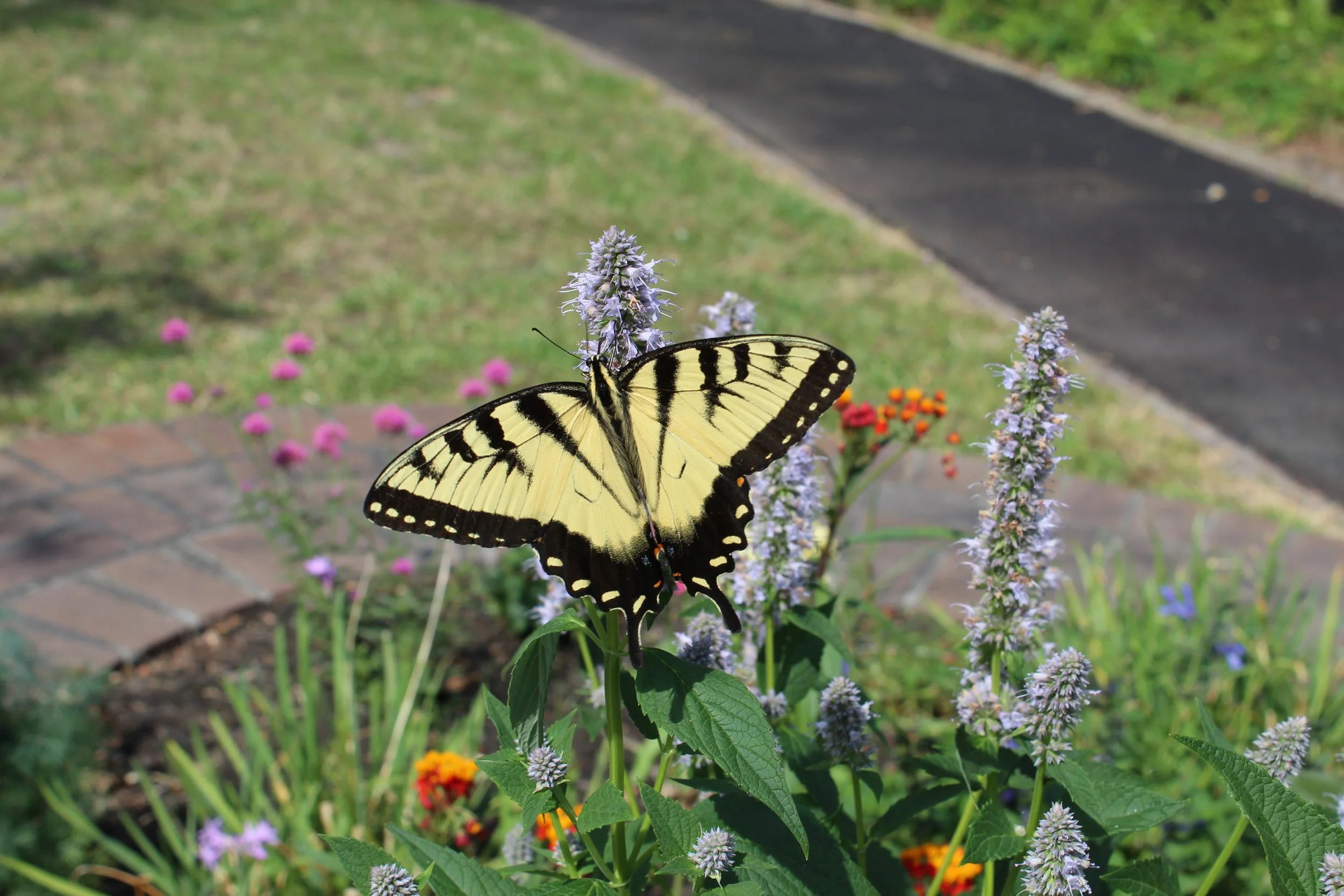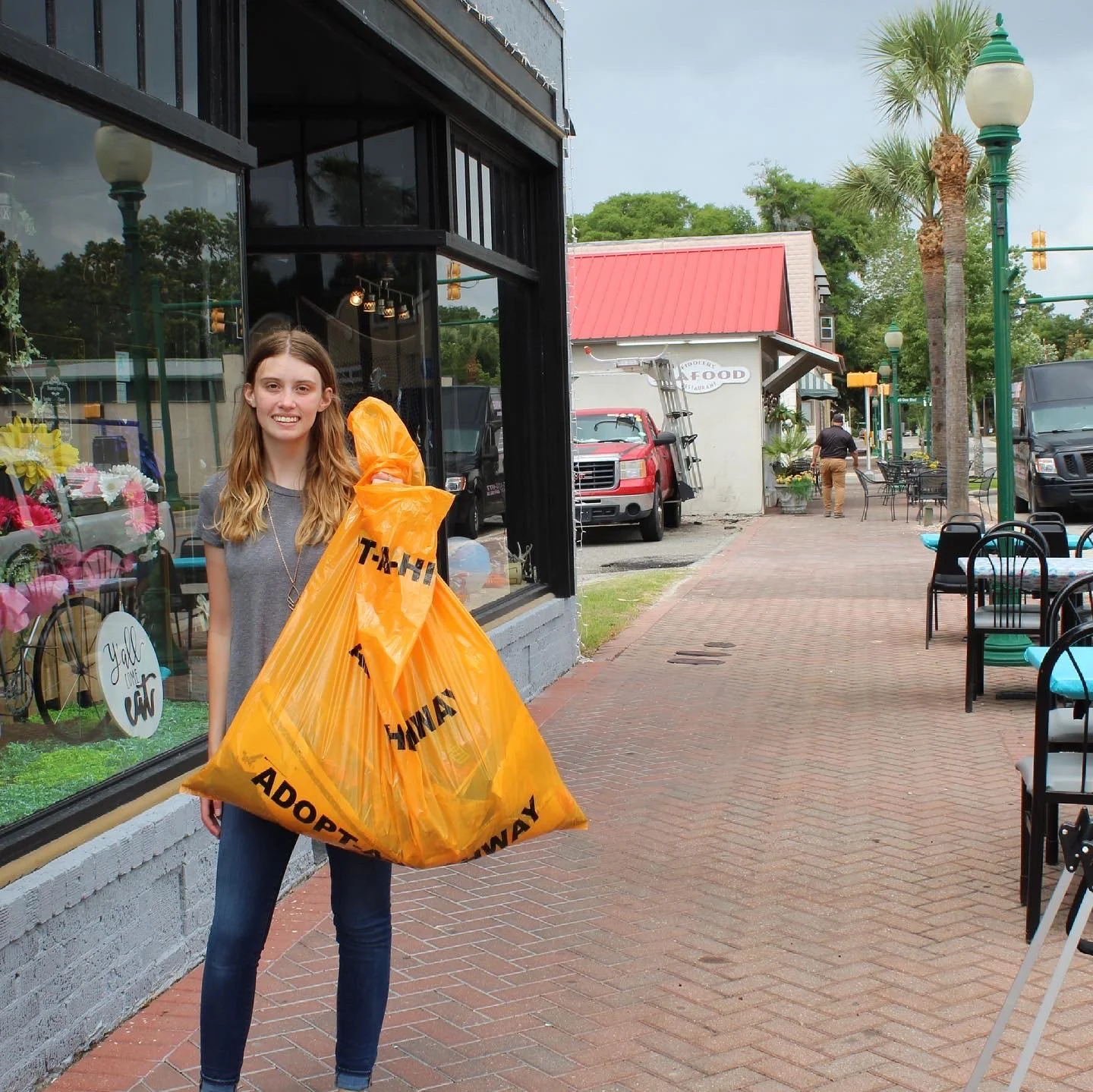Emma Richardson: The Butterfly Effect
When I began my internship at the Blue Heron Nature center, I had a lot of big ideas. Going into the internship, I knew that my main responsibility was creating and running an Instagram account for the nature center. Until I came around, their only social media presence was on Facebook. The Blue Heron wanted to expand their demographics and reach some younger people in the community, which is why I pitched the idea of an Instagram.
I had plans to take pictures and create fun infographics that educate people about the effects of litter and events we were hosting. I was excited to leave my comfort zone and expose myself to a new a field of study that was not education.
So, on my first day, I did just that. I brought my nice camera to work and spent an hour walking the trails in mid-summer South Carolina humidity taking pictures. I spent most of my time in our butterfly garden, watching the butterflies and bees enjoy the beds of flowers planted just for them.
Amid all the beautiful blooms I thought about how everyone would perceive my pictures and decided that everyone would love them, simply because I loved them.
After a few days of posting pictures from past litter pick-up events and building up followers, I was ready to share the pictures I had taken. I took my time selecting my favorite picture and cropping it to be just right. I choose a picture of an Eastern Tiger Swallowtail, South Carolina’s state butterfly, drinking nectar from a buddleia. Then I took even more time coming up with a perfect caption that surely everyone would read. I hit ‘post’ and closed Instagram to work on my other projects while I waited for people to like the picture.
Hours later, I checked to see how the post was doing. Upon seeing the number of likes, I was instantly humbled. There were eight likes on the post and zero comments, including one like from my personal Instagram account. It was not the response I wanted at all, and I felt like I had failed. I loved the picture I had taken, and I wanted others to love it too, but it seemed like no one else cared.
This trend continued throughout my internship. As I spent more time there, my role changed, and I began to do more work outside of building the Instagram account. I started to help my boss get her new project going, a campaign that focused on cigarette litter prevention. She called it Biz for Butts, and the goal was to partner with local businesses and supply them with cigarette bins that their customers could use.
We spent multiple days driving around to local businesses and meeting with the owners about our campaign. To help spread awareness of our new project, I researched effects of cigarette litter and created infographics to share with the community. Once again, I had high expectations for what I had made. I put a lot of time and effort into my creations, and I wanted others to like it, but each time it was received with the same appreciation as a blurry, off-centered photo did.
Over time, I started to realize that I was once again valuing the things I made based off other people’s impressions. With each creation I made, the same thing happened. I would get excited to share what I made, then receive a reaction that was neutral at best. As the pattern continued, I got tired of feeling let down by other people’s reactions and I knew something needed to change. In my head, the things I made were only good if someone else said so. By the end of my internship, I finally started to acknowledge that was not true.
It did not matter if strangers viewed what I made the same way I did. I loved the picture of the butterfly because I got to experience the peacefulness and beauty of nature while taking it. When creating brochures, I loved the problem solving I had to do. I had to decide what information was the most important and phrase it in a way that was interesting. Although decisions are often difficult for me, there was joy in finally solving the problem.
For me, the pride came from the process not the product. Of course, the product was great and feeling of finishing something was a relief, but the process was so much more rewarding. Knowing that I worked hard on something, even if it was as simple as a logo, was better than a stranger telling me “Good job”.
When I look back at my time at the Blue Heron Nature Center, learning this lesson was the most significant thing I did. Sure, the account was not as big as I wanted it to be, but I no longer cared about numbers. I was done putting my value in the hands of weekly statistics. Like many other members of Generation Z, I have been taught to search for validation through social media. It is a difficult habit to break, but my experience at the Blue Heron helped me get there.
Emma at a litter pick-up in downtown Ridgeland, SC
Emma Richardson is senior early childhood education major with an emphasis in Montessori education from Ridgeland, South Carolina. She completed her breakaway during summer of 2021 as an intern at the Blue Heron Nature Center. She will graduate in Spring 2022 and plans to teach in a Montessori setting.

